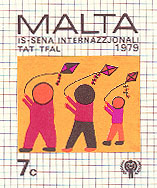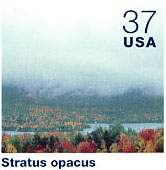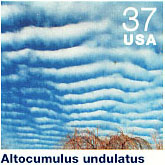
| Kite Aerial Photography James S. Aber |

| Kite Aerial Photography James S. Aber |
| Wind | Beaufort Category | Surface Effects | KAP| < 1 | 0. Calm | Smoke rises straight up | Blimp | 1-3 | 1. Light air | Smoke drifts, wind cannot be felt, smooth water | Blimp | 4-7 | 2. Light breeze | Wind felt on face, leaves rustle, ripples on water | Difficult KAP | 8-12 | 3. Gentle breeze | Leaves and twigs flutter, small flags extended | Good KAP | 13-18 | 4. Moderate breeze | Wind raises dust, branches move, flags flap, | small waves, numerous whitecaps Excellent KAP | 19-24 | 5. Fresh breeze | Small trees sway, many whitecaps, some spray | Fair KAP | 25-31 | 6. Strong breeze | Branches move, lines whistle, whitecaps everywhere | Dangerous KAP | > 32 | 7+. Gale | Large trees move, walking difficult, howling sound, | large waves, foam streaks Not advised | |
|---|

| Left: good KAP with gentle to moderate breeze. Right: poor KAP with only a light breeze. 
|
| Meters per second (m/s) | Km per hour (km/h) | Miles per hour (mph) | ||||||||||||||||||||||||||||||||||||||||||
|---|---|---|---|---|---|---|---|---|---|---|---|---|---|---|---|---|---|---|---|---|---|---|---|---|---|---|---|---|---|---|---|---|---|---|---|---|---|---|---|---|---|---|---|---|

| Ground illumination. On overcast or cloudy days the ground is uniformly illuminated in "gray" light--strongly scattered light that is rich in blue and deficient in red and green components. The lower level of illumination means either slower shutter speed, larger aperture (smaller f-stop), or faster film will be needed for proper exposure, any of which may result in degradation of photo quality. Furthermore such scenes have a black-and-white character in which good color definition is lacking. |

| Shadows. Shadows are an important element in aerial photography. Shadows create a 3-dimensional effect that helps for identification of ground features. Sharply defined shadows aid in recognition of objects that may appear unfamilar when viewed from above, and shadows may indicate the heights or slopes of features. An aerial photograph without shadows appears "flat" and lacking in definition. Shadows may be enhanced by taking photographs with a low sun position--early morning, late afternoon, or winter. |
Lighting conditions include many factors beyond the presense or absence of clouds. The direction of photography in relation to the sun is another important variable to take into account. Photographs in oblique views are taken normally in directions away from the sun (or at right angles to the sun). This provides for good illumination and some shadowing. An exception to this general rule is the opposition effect, where the camera is in direct alignment with the sun and ground area being photographed. In most cases, oblique photographs taken toward the sun result in high brightness contrast but poor color, because of specular (mirror) reflections and strong shadows. Sun glint may create dramatic effects over water bodies.
At low temperature, wind chill is an important factor for KAP flyers. For example, at 45°F (7°C) with a wind of 25 mph (40 km/h), the wind chill is 22½°F (-5°C); the same wind at 25°F (-4°C) feels like -7°F (-22°C). Note: wind chill applies only to people and warm-blooded animals; it has no effect on cameras and other mechanical devices. For cold weather KAPing, wear well-insulated clothing with wind-breaker outerwear. Wind is a relief on hot days, as it helps cool the body by evaporation of sweat. Drink plenty of fluid to prevent rapid dehydration. Bright sun means strong ultraviolet (UV) radiation at any time of year, especially at high altitude or low latitude, near water bodies, or with snow cover. Strong sun screen and good sunglasses are most important.
Return to Great Plains KAP homepage.
![]() Special Lighting Effects
Special Lighting EffectsSubject Location Subject Location
Cloud shadows Nebraska and Kansas
Sun glint Lake Kahola, Kansas
Sun glitter Kansas and South Dakota
Opposition effect Kansas (various)
Opposition effect Mlawa, Poland
Toward the sun Emporia, Kansas 
Time to pack up KAP equipment,
when you see this cloud coming!Temperature and Exposure
Given a windy, sunny day, the next weather consideration is temperature, which has effects both
on equipment and the kite flyer. Batteries lose power rapidly at temperatures below 40°F
(5°C). This is particularly noticeable for small rechargeable batteries used on KAP rigs.
Film is not affected by low temperature. However, color film may become unstable when subjected
to high temperature above 95°F (35°C). On hot summer days, film and cameras may be stored
in a sealed container within a cooler to minimize exposure to high temperature.![]() Related sites
Related sites

Last update Jan. 2008.